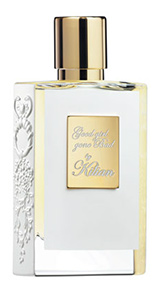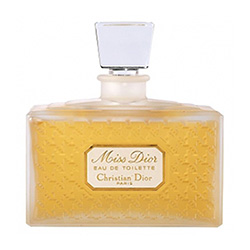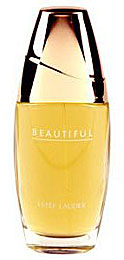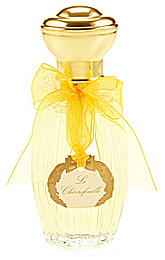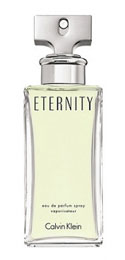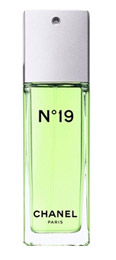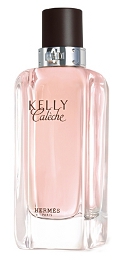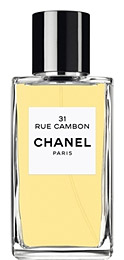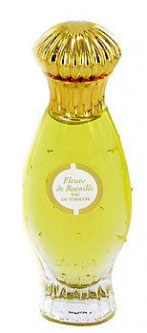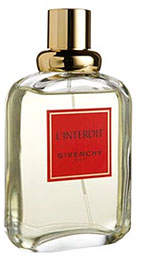Hello, By Kilian. Long time no see. Still packaging things to make me covet you, I see. Good Girl Gone Bad is a recent release from By Kilian and features a gorgeous white and gold case.
In Bottle: Fruity, light and floral. I smell a bit of soapiness too.
Applied: A fruity opening with a osmanthus and jasmine showing. It smells like and soapy with a hint of jasmine. The jasmine becomes more prominent as the fragrance wears on and a touch of tuberose can be detected in the midstage. Jasmine takes on a green aspect mixing with a rose note. Good Girl Gone Bad isn’t going bad so far, and as I continue to wait her out, I get impressions of cedar and patchouli with a speck here or there of darkness. The fragrance never really gets very dark or daring. It remains a rather tame rose jasmine and cedar composition all the way until its fade.
Extra: I haven’t been following By Kilian in a while, and when I saw this fragrance had come out, I was drawn in by the name. I had this idea that it would start off light and airy and turn into a sinister beast. But it never really reaches beast form, and the florals in the midstage carry its good girl vibe all the way to the end. Good Girl Gone Bad was released in 2012 and can be had for $245 at Luckyscent.
Design: By Kilian usually does very well with its packaging. Good Girl Gone Bad comes in a beautiful bottle decorated to exquisite detail with a white and gold box featuring a golden snake coiling on top. Everything about it screams luxury.
Fragrance Family: Floral
Notes: Osmanthus, jasmine, rose, tuberose, narcissus, violet, plum, cedar, amber, patchouli, vetiver, musk.
Okay, so the bad girl never got to the party. Maybe she was too busy rocking out somewhere else? Wherever she went, she just wasn’t in this fragrance. What is here is a rather nice floral scent with decent longevity and a beautiful casing.
Reviewed in This Post: Good Girl Gone Bad, 2012, Eau de Parfum.




